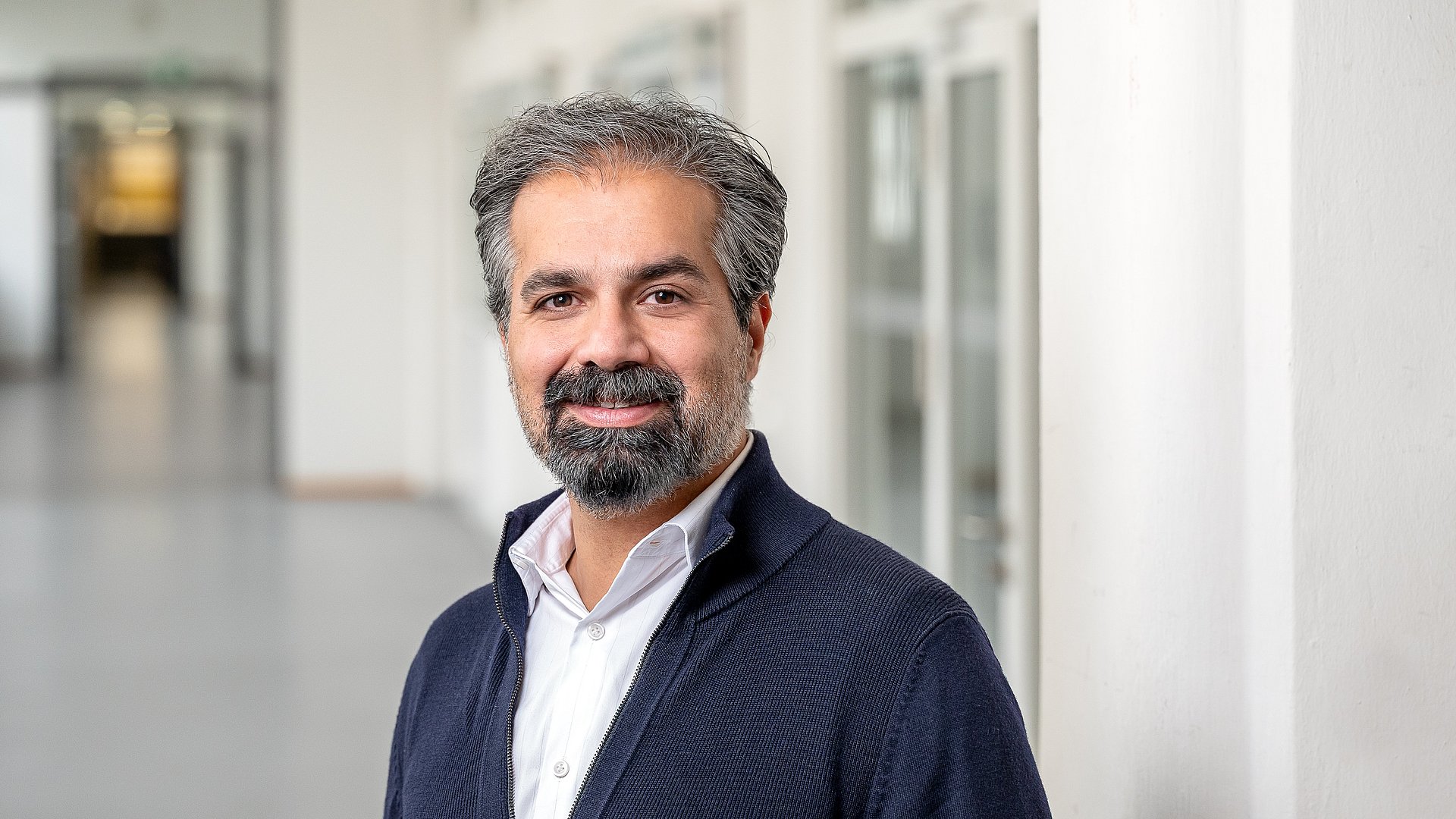Many surgeons even admit that medical robots can now operate with greater precision than human specialists. However, the complex preparation required for robotic surgery still takes far too long. But a new robotic assistant for eye surgery for age-related macular degeneration (AMD) developed by Prof. Mohammad Ali Nasseri from the Technical University of Munich (TUM) is ready to go in just under five minutes.
 Andreas Heddergott / TUM
Andreas Heddergott / TUM Currently, doctors treat AMD by injecting drugs into the side of the eye. The robot is capable of inserting injections into the 200-micrometer-thick retina with an accuracy of just 15 micrometers. This ensures that the active ingredient is delivered precisely to the right place, where it can block a growth factor that would otherwise lead to blindness in those affected. Currently, nearly 200 million people worldwide suffer from the disease, and by 2040, that number is expected to rise to more than 280 million. People over the age of 60 are particularly affected, with AMD being the cause of blindness in nearly one in ten cases.
Five minutes of preparation time for the robot and the patient
 Astrid Eckert / TUM
Astrid Eckert / TUM Nasseri conducts research at the Chair of Medical Autonomy and Precision Surgery and is a member of the Munich Institute of Robotics and Machine Intelligence (TUM MIRMI). His team has developed a mobile platform with a turntable and a highly sensitive robotic arm. The sensors automatically locate the eye and iris. 'We have trained the neural networks so that the robot can assume the perfect position for the operation in less than five minutes,' says Nasseri. Typically, preparation for robot-assisted surgery takes up to an hour.
15-micrometer accuracy feasible
The ideal surgical preparation process involves the mobile platform moving up to the treatment bed with centimeter precision, positioning the robotic instruments above the bed with millimeter precision, and ultimately operating with micrometer precision. 'The last step is the biggest challenge,' says Nasseri, who is collaborating with a Japanese manufacturing company on the high-precision 'manipulator'. It is capable of placing the syringe with a precision of 15 micrometers. However, despite anesthesia, the eye may move involuntarily during surgery. To detect these slight and slow movements, researchers use an optical coherence tomography (OCT) device, which continuously takes images of the retina. To replicate and simulate this movement, the researchers had an artificial eye perform sinusoidal movements. The new precision robot is capable of following these movements for a full minute. This allows the drug to be administered with a deviation of 25 micrometers - in other words 0.025 millimeters. 'That is still perfectly adequate for such applications,' says Prof. Nasseri. The TUM Clinic has played a crucial role in the development of the robot. The director of the Department of Ophthalmology, Prof. Peter Charbel Issa, is confident that it will help to avoid complications such as inflammation, which can occur when administering medication manually.
Further trials and tests required
It will be some time, however, before the robot actually administers its first injection into a human eye: the next step will be to test it on the eyes of dead pigs, which are very similar in structure to those of humans. Initial tests on live animals are planned for early 2026, before humans can receive their first injection in clinical trials in a few years.
Further information:
GRATA is the name of Prof. Ali Nasseri's new research project. The Federal Ministry of Research, Technology, and Space (BMFTR) committed €1.91 million in funding over a three-year period starting in October 2025. The project, coordinated by Nasseri from the TUM Medical Centre, focuses on the development of a modular, AI-supported platform for robot-assisted microsurgery. The goal is to support medical staff in using robotic applications safely and competently. Partners: fortiss, TU Chemnitz, adesso SE, SynthesEyes GmbH and YOUSE GmbH
PAROS: Multi-Component Robotic System and an Image-Guided Patient Alignment for Robot-Assisted Ophthalmic Surgery; Alireza Alikhani, Van Dai Nguyen, Satoshi Inagaki, Benjamin Busam, Koorosh Faridpooya, Mathias Maier, Peter Gehlbach, Iulian Iordachita, Nassir Navab, M. Ali Nasseri, Daniel Zapp; 2025; https://ieeexplore.ieee.org/document/11003878
Towards Motion Compensation in Autonomous Robotic Subretinal Injections; Demir Arikan, Mojtaba Esfandiari, Peiyao Zhang, Michael Sommersperger, Shervin Dehghani, Russell H. Taylor, M. Ali Nasseri, Peter Gehlbach, Nassir Navab, Iulian Iordachita; International Symposium on Medical Robotics (ISMR), 2025: https://ieeexplore.ieee.org/document/11025990






